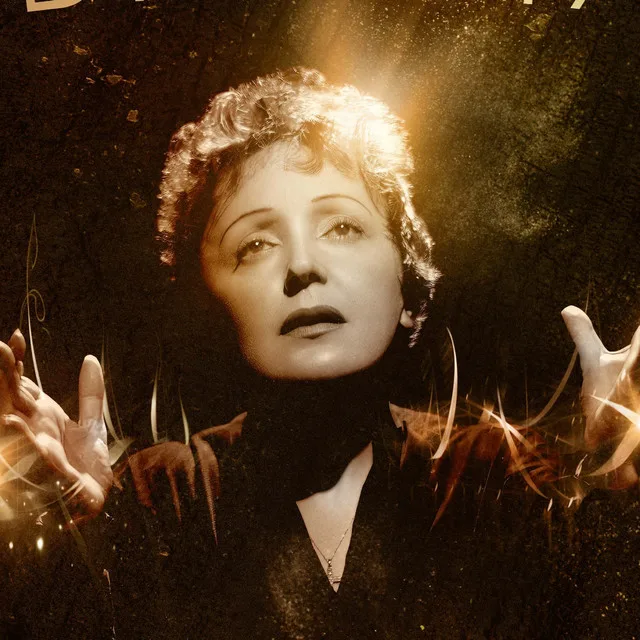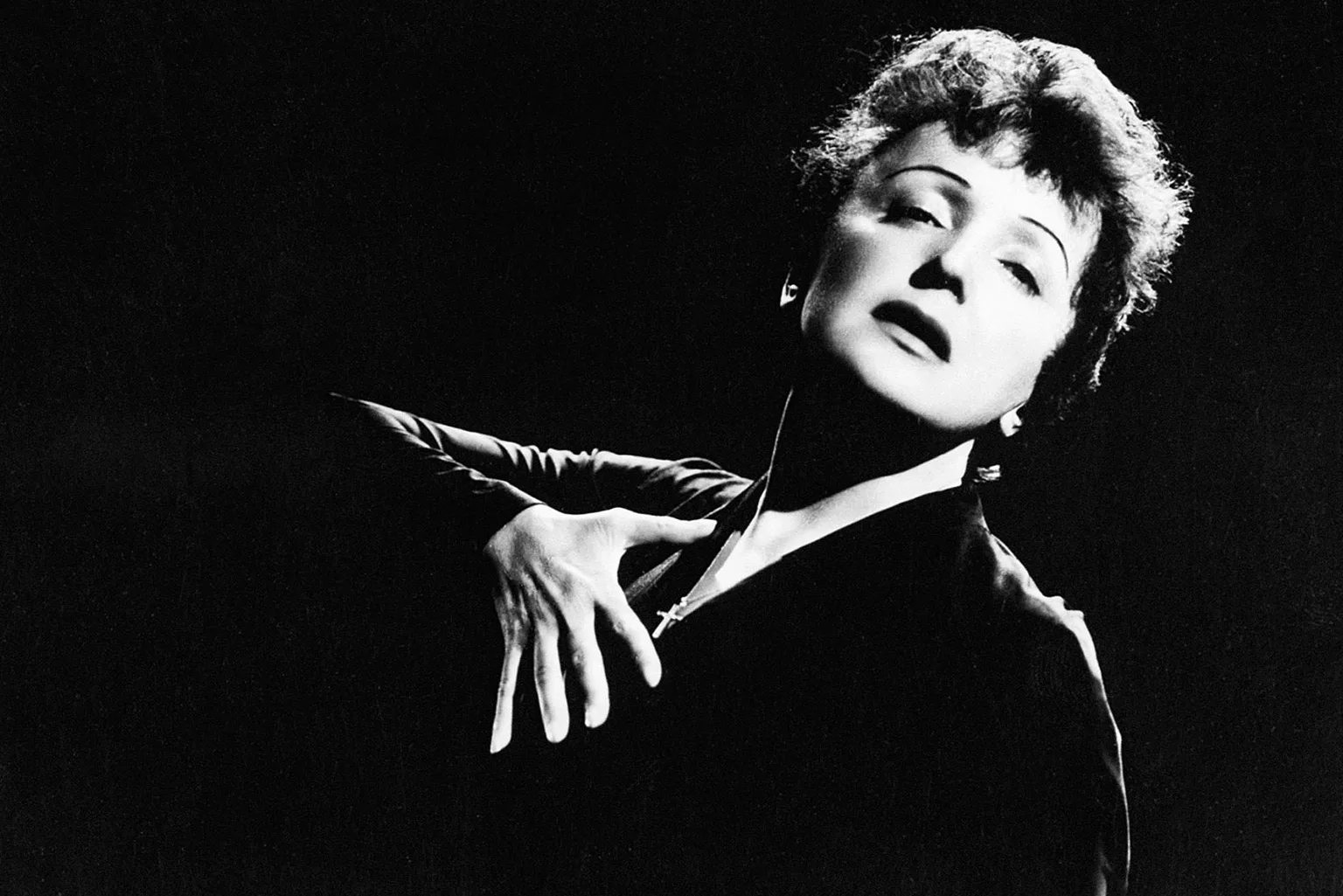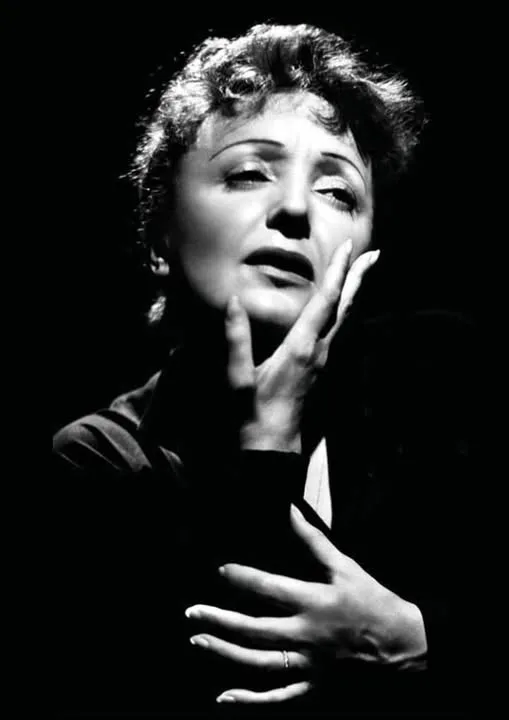Born in the streets, raised in a brothel, went blind at four, lost her baby at sixteen, watched her great love die in a plane crash—and became the voice that sang No, I regret nothing. Édith Piaf lived more tragedy in 47 years than most people could survive in several lifetimes. And she sang through all of it. This is the story of The Little Sparrow—a woman who transformed unimaginable pain into some of the most beautiful music ever recorded. As of November 16, 2025, her voice continues to echo across generations, a testament to resilience, love, and the unyielding power of the human spirit.

The Beginning: Born Under a Lamppost (December 19, 1915)
Paris, 1915. According to legend, Édith Giovanna Gassion was born under a lamppost on a street corner in Belleville—her mother couldn’t make it to the hospital in time. The truth is probably less dramatic (she was likely born in Hôpital Tenon), but Édith told the street-birth story so often it became part of her mythology. And in a way, it was true. She was born into the streets, even if not literally on them.
- Father: Louis Alphonse Gassion, a street acrobat.
- Mother: Annetta Maillard, a café singer struggling with addiction.
- Both were poor, both were barely surviving.
Her mother abandoned her as an infant. Édith’s early life was chaos—until her father left her with his mother in Normandy.

Raised by Prostitutes: An Unconventional Family
From ages 3 to 7, Édith was raised in a brothel run by her grandmother. These women—marginalized, stigmatized, survivors—became her surrogate mothers. They fed her, clothed her, sang to her, loved her. Édith later said they were the first people who truly cared for her.
“They taught me kindness in a world that had shown me none.”
It was an unconventional childhood. But it gave her something crucial: an understanding of human suffering, resilience, and compassion that would echo through her entire life.
The Miracle: Blindness and Faith
Around age 4, Édith developed keratitis—a severe eye infection. She went blind. The women of the brothel were devastated. They scraped together money and took her on a pilgrimage to Lisieux, to the tomb of Saint Thérèse.
They prayed. They wept. They begged for a miracle.
According to Édith: her sight returned two years later.
Medical historians suggest the infection resolved naturally.
But to Édith and the women who loved her, it was a miracle.
Faith, suffering, redemption—themes that would define her music forever.

Singing to Survive: The Streets of Paris
After World War I, Édith’s father reclaimed her. At age 7, she began singing on the streets of Paris. Crowds stopped. Coins dropped into the hat. The girl was tiny—but her voice was enormous, raw, powerful, haunting.
She sang to survive. And she discovered singing was the one thing that made sense in a chaotic world.
The Loss That Never Healed: Marcelle
At 15, Édith fell in love with Louis Dupont, a delivery boy. She got pregnant. In 1933, she gave birth to Marcelle.
For a brief, shining moment, Édith had a family. She adored her daughter.
Then in 1935, Marcelle died of meningitis at age 2.
Édith was devastated. She blamed herself. She never fully recovered.
That grief would haunt her music forever—the ache in her voice, the longing, the acceptance that love means loss.

The Little Sparrow Takes Flight
In 1935, Louis Leplée, owner of a Pigalle cabaret, heard Édith singing on the street. He hired her immediately. He gave her a stage name: La Môme Piaf—The Little Sparrow—because she was tiny (4 feet 8 inches) but had an enormous voice.
- October 1935: Cabaret debut. Paris fell in love.
- 1936: First recordings.
- 1937: Major theaters.
The street singer was becoming a star.
La Vie en Rose: Hope After War
In 1945, after France’s liberation, Édith wrote La Vie en Rose (Life Through Rose-Colored Glasses). The 1946 recording became an instant classic—a song about seeing life through love, hope, beauty despite suffering.
It wasn’t just music. It was France rebuilding itself after war.
The Great Love: Marcel Cerdan
In 1948, during a New York tour, Édith met Marcel Cerdan—French-Algerian boxer, world middleweight champion, married father of three. They fell deeply, impossibly, scandalously in love.
Édith wrote Hymne à l’amour (Hymn to Love) for him—a song about loving someone so intensely you’d follow them to death.
October 28, 1949
Marcel boarded a plane from Paris to New York.
The plane crashed in the Azores.
Everyone died.
Édith was destroyed. She spiraled into grief, morphine, alcohol. But she kept singing. Hymne à l’amour became her tribute—a love song to a dead man.
No, I Regret Nothing
By 1960, Édith was ravaged by illness—liver disease, arthritis, multiple surgeries, addiction. She was 47 but looked 70.
And then she recorded Non, je ne regrette rien.
No, I regret nothing.
Not the good things, not the bad things.
It’s all the same to me.
Because my life, my joys,
Begin today—with you.
It was defiance. It was acceptance. It was Édith Piaf distilled into three minutes.
The Final Performances
In 1962–1963, Édith performed her final concerts at the Olympia Theatre in Paris. She was dying. Everyone knew it. But she walked on stage—tiny, frail, barely able to stand—and sang with everything she had left.
Paris wept as they listened.
October 10, 1963
Édith Piaf died at her villa on the French Riviera. She was 47 years old.
Her funeral drew tens of thousands of mourners. Paris stopped to grieve.
She was buried in Père Lachaise Cemetery alongside France’s greatest artists.
The Voice That Never Dies
Édith Piaf’s music has never faded:
- La Vie en Rose: Covered by Louis Armstrong, Lady Gaga, and countless others.
- Non, je ne regrette rien: An anthem of defiant acceptance.
- Hymne à l’amour: One of the greatest love songs ever written.
The Little Sparrow
She was:
- Born in the streets.
- Raised in a brothel.
- Went blind, then miraculously saw again.
- Lost her daughter at age two.
- Lost her great love in a plane crash.
- Battled addiction, illness, and despair.
And she sang through all of it.
Non, je ne regrette rien.
No, I regret nothing.
Édith Piaf didn’t just sing songs—she sang her soul.
Every wound. Every loss. Every moment of love and pain.
The Little Sparrow was only 4 feet 8 inches tall.
But her voice filled the world.
And it’s still filling it. Forever.





